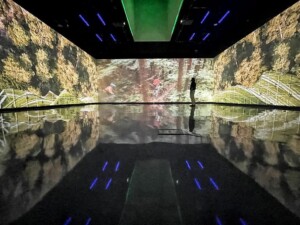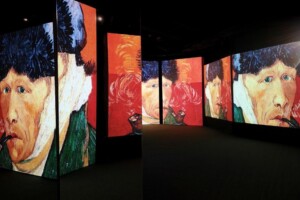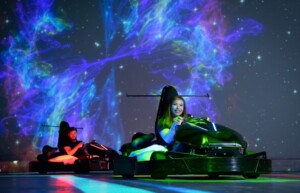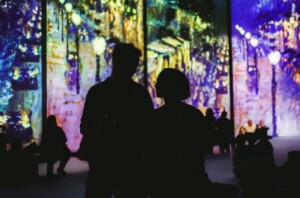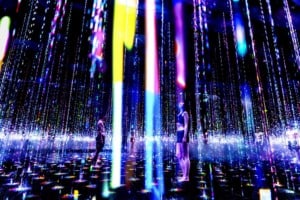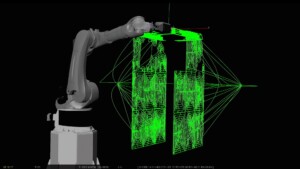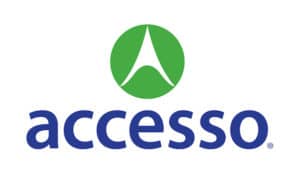You don’t have to dig deep in the dustbin of history to find products that didn’t live up to the hype. Aside from unlucky timing (hello, Zune), products often sink when the user has to adapt to the device and not the other way around.
For example, drivers say they prefer buttons to dashboard touchscreens, yet most car-makers equip them nonetheless. It’s the same with vinyl records vs. CD (can you guess which format sold more last year?) and the vaunted superiority of digital over analogue audio. Or the metaverse concept that is yet to overcome feedback that some home VR headsets are nauseating. In these cases, the promise of a better experience comes at the expense of what the user actually wants.
Build a product around the customer
You need to be almost clairvoyant to predict where markets will be several years in the future and what technologies of today will give a concrete benefit to the customers of tomorrow. In media-based LBE attraction design, it’s very difficult to judge which projection trends are worth investment and which are overhyped. So, rather than dictating a design based on how we think our products should be used, customers show us what they want. Working with clients at their site or our XR Lab deepens our understanding of their needs.
Projector design is really an outcome of co-creative customer partnerships. Partnerships diversify the knowledge pool, add value to each project phase, and lead to better-designed products. The launch of the REQ12 Series is the perfect example of this “user-refined” design approach. Let’s zoom in on the design of this 1-Chip DLP platform. Here, we’re going to look at how it responds to trends in location-based and themed entertainment.
Embracing projection trends: the boom in immersive entertainment
Guests expect ever-higher levels of visual realism from media-based entertainment, especially in immersive 360° spaces where images completely envelop them. Here, guests might wander very close to the screen to examine fine details such as brushstrokes. Maintaining the illusion presents big challenges for engineers. In addition to Quad Pixel Drive, which creates smooth 4K images without gridding, they proposed several solutions for maintaining image realism.
Focus uniformity is as important as resolution when viewing images up close. New lenses for the REQ12 Series not only improve native contrast performance but also include powered periphery focus adjustment. Uniform focus is easily achieved from the image center to the edges using the remote control. This means that the content looks realistic even when viewed up close.
We have also significantly improved the contrast. Customers asked us to address the issue of dimming during high-contrast scenes. In response, new scene analysis circuitry was developed to better detect the difference between dark and light shades in each video frame.
A projector’s ability to reproduce red greatly impacts immersion. Rich Color Enhancer expands red-channel output for more accurate red, which is vital for artwork. We also noticed customers struggling with color banding issues. These often only show up when content is projected, and it’s too late to reencode. For the first time on a 1-Chip DLP projector, Gradation Smoother is included to smooth away bands in color gradients at the touch of a button.
Imperfections in edge blends are more noticeable when projecting at 4K on curved screens. We evolved our black-level adjustment tech to ensure blends remain invisible. Control points are used to adjust the black border shape on curved screens to within a half-pixel margin.
Embracing gamification
Another trend that influenced the REQ12 Series projection design is the need for more interactive and personalized experiences that allow people to connect with the story and each other. REQ12 Series integrates with peripherals to improve AR/XR application quality and make them repeatable and shareable.
The REQ12 Series can display 2K/240 Hz video without motion blur or image artefacts to meet this need. This allows us to pivot and embrace the gamification of the location-based entertainment industry. For example, we’re targeting the esports market.
Millions watch eSports events live or online, yet few professional projectors can currently display fast-paced action fluently. REQ12 Series meets the demand for smooth high-speed motion reproduction in this market and beyond.
Furthermore, the 240 Hz capability syncs with our Real-Time Tracking Projection-Mapping SDK to limitlessly combine digital and analogue elements within an XR attraction. The system supports the creation of immersive yet social gameplay experiences without the need for VR headgear.
Projection trends and the importance of reliability
Our customers made it clear that the guest experience cannot be interrupted by failures. They’re even less enthusiastic about the idea of filter changes, lamp changes, and maintenance. So, there are no filters to change, no lamps to replace, and little need for periodic image calibration.
As well as a hermetic optical engine rated to the IP5X Dust Protected standard, the REQ12 Series features an Intel SDM slot. It adapts to the user’s connection preference via optional function boards and supports the common protocol used to control the attraction. This is a big win for system reliability and efficiency in terms of automation. In addition, the projector features a Backup Input to prevent screen blanking if the primary signal fails.
Get in touch
Projectors are an important part of any media-based attraction. But the people you work with will ultimately bring your vision to life. If you’re testing different projector brands, look beyond the device’s design to the services and expertise that support it.
If you’d like to learn more about the services and technologies underpinning a partnership with Panasonic Connect, please click here or email me.



